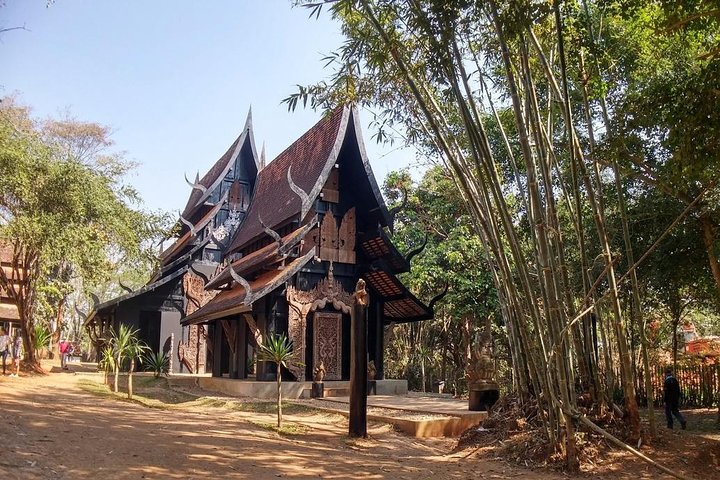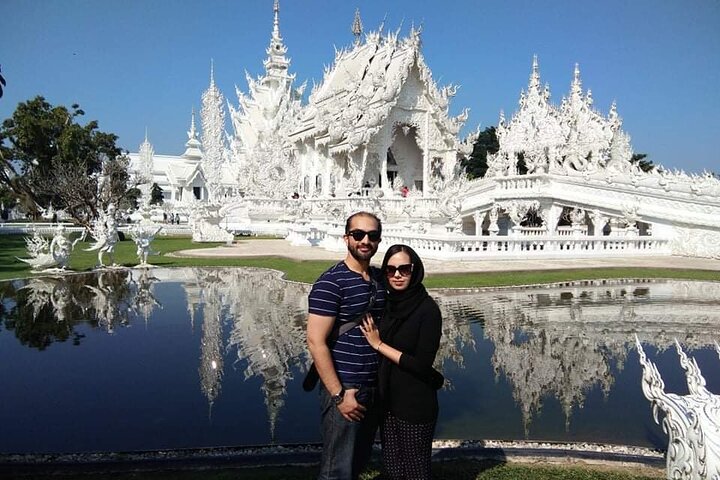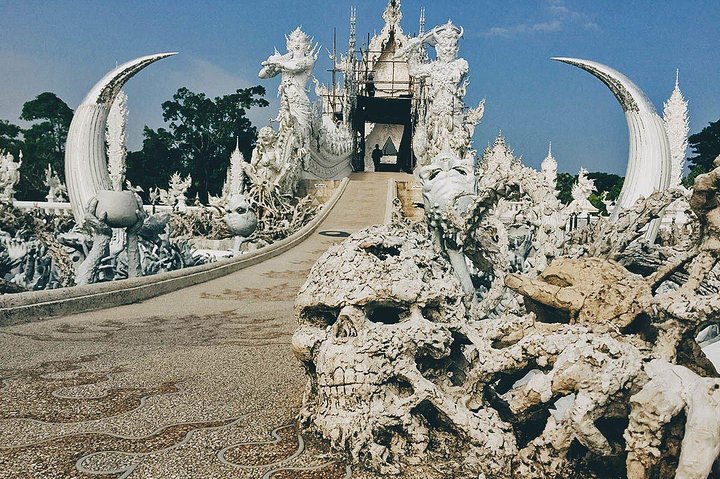Sunset Serenity: Exploring Chiang Rai’s Temples and Traditions
Drawn by the allure of Chiang Rai’s temples at sunset, I embarked on a journey to explore their beauty and cultural significance. The promise of a unique experience and a northern-style dinner was too enticing to resist.
A Journey Through Time: The Temples of Chiang Rai
As the sun began its descent, casting a golden hue over the landscape, I found myself standing at the entrance of Wat Rong Khun, the White Temple. This was the beginning of an unforgettable journey through the sacred temples of Chiang Rai, a place where tradition and modernity coexist in harmony. The White Temple, with its intricate architecture and surreal murals, was a sight to behold. The temple’s creator, Chalermchai Kositpipat, has infused his unique vision into every corner, blending traditional Buddhist themes with contemporary elements. As I wandered through the temple, I was struck by the way the setting sun illuminated the white facade, creating a mystical atmosphere that seemed to transcend time.
The experience was not just about the visual spectacle; it was a spiritual journey that invited reflection and introspection. The temple’s design, with its bridges and sculptures, symbolized the path to enlightenment, a theme that resonated deeply with me. As someone who has always been fascinated by the intersection of culture and spirituality, this visit was a profound reminder of the rich tapestry of beliefs that define this region.
The Blue Temple: A Modern Marvel
Next on the itinerary was Wat Rong Seur Ten, the Blue Temple. Unlike the White Temple, which is steeped in traditional symbolism, the Blue Temple is a celebration of modern Buddhist art. The vibrant blue and gold exterior was a feast for the eyes, and as I stepped inside, I was greeted by the sight of a magnificent white Buddha, standing serenely amidst the blue hues.
The temple’s design is a testament to the creativity and innovation of its creators, who have managed to craft a space that feels both sacred and contemporary. The use of color and light within the temple creates a sense of tranquility, inviting visitors to pause and reflect. As I stood before the Buddha, I felt a sense of peace wash over me, a moment of stillness in the midst of a bustling world.
This visit was a reminder of the dynamic nature of culture, how it evolves and adapts while remaining rooted in tradition. The Blue Temple is a symbol of this evolution, a place where the past and present coexist in harmony.
A Culinary and Cultural Finale
As the day drew to a close, I found myself at Wat Huay Pla Kang, home to the towering 100-meter-high white Buddha. The view from the top was breathtaking, offering a panoramic vista of the Chiang Rai landscape. It was a fitting end to a day filled with awe and wonder.
The evening was capped off with a northern-style dinner, a culinary journey that introduced me to the flavors and aromas of the region. The meal was a celebration of local ingredients and traditional recipes, a testament to the rich culinary heritage of northern Thailand. As I savored each bite, I was reminded of the importance of food in cultural expression, how it brings people together and tells a story of its own.
Before returning to my hotel, I took a leisurely stroll through the Chiang Rai Night Bazaar. The vibrant market was a sensory delight, with its colorful stalls and lively atmosphere. It was a chance to immerse myself in the local culture, to connect with the people and experience the everyday life of Chiang Rai.
This journey through the temples of Chiang Rai was more than just a sightseeing tour; it was an exploration of the soul of a region, a chance to connect with its history, its people, and its traditions. It was a reminder of the beauty and complexity of cultural heritage, and the ways in which it continues to inspire and enrich our lives.














































